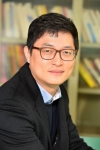
At the 'Samsung Electronics Image Sensor Presentation' held at the Samsung Electronics Press Room on the morning of the 9th, Park Yong-in, the sensor business team leader (Vice President) of Device Solution (DS) of Samsung Electronics said, "(Samsung Electronics) has set its sights on achieving the No. 1 position in the system semiconductor field by 2030. We (image sensor) want to go even faster."
This can be interpreted as implying that it will outperform Sony Japan, the No. 1 company in image sensors, within the next few years. According to market researcher Techno System Research (TSR), last year, Sony has estimated sales of $ 6,638.5 million in the CMOS image sensor market. With a market share of 51.2%, it holds the No. 1 position in the industry. Samsung Electronics is chasing Sony with sales of $2.7 billion and a market share of 21.6%.
The market share gap is still significant. However, experts say the technology has reached the level almost the same as Sony. On the day, Samsung Electronics has announced that it has developed a new 64 million-pixel image sensor, the Isocell Bright GW1, and the 48 million-pixel Isocell Bright GM2 with the pixel size of just 0.8 microns (㎛), which will be mass produced in the second half of this year. It is likely that the products will be mounted to the new Galaxy Note.
Samsung Electronics is the world’s first company to develop a 64 million-pixel high-pixel product with a pixel size of 0.8 μm. Sony last year released a 0.8 μm, 48 million-pixel product. Samsung was late to 4800-megapixel development but was ahead for 64 million-pixel. Samsung Electronics and Sony are the only companies in the world capable of mass-producing 0.8μm pixel-sized image sensors.
New product Isocell Bright GW1 with 64 million-pixel small image sensor and pixel size of only 0.8 μm
Vice President Park answered the question of whether the company can surpass Sony by saying, "In terms of technology, the key is who becomes the first to release a 0.7-μm-pixel product. The company is holding the oligopoly position in the market share, and the ranking can suddenly change due to a certain reason. I think that time will come."
Samsung Electronics has started to become the leader in the image sensor market since its development of the proprietary Isocell technology in 2014. The Isocell technique is a technique in which fine metal bulkheads are formed between pixels to significantly reduce the Crosstalk phenomenon, leaking of light to another region when light travels through the red (R), green (G), and blue (B) color filters to the photodiode (PD). This means that the light entering the green pixel is less likely to leak into the red or blue pixel. This increases the light receiving area by 30% over general products. Thus, clearer photographic results can be obtained even in a dark environment. Color reproducibility is also raised.
In 2018, the company announced Isocell Plus, replacing the existing metal barrier material with new material to upgrade the technology one step further. Only Samsung Electronics has applied this technology to image sensors.
It also solved the problem caused by the small pixel size. When the pixel size becomes smaller, the part receiving the light is also reduced, resulting in noise during high-sensitivity shooting and expression of rich gradations becomes difficult. Samsung has responded to this problem by developing the tetracell technology that turns four pixels into a single pixel in a software environment where light is scarce. With the tetracell technology in operation, the total number of pixels is reduced by a factor of four.
An industry observer said, "Sony has commercialized the backside illumination (BSI: BackSide Illumination) technology earlier, which can accept more light, or the three-layer laminated image sensor capable of high-speed shooting. However, Samsung is also introducing diverse innovative technologies to compete with Sony."
Samsung Electronics Vice President Park Yong-In said, "The market for all sensor semiconductors including image sensors is expected to grow to $130 billion in 2030. We will create semiconductors that save people and make people’s lives better."

